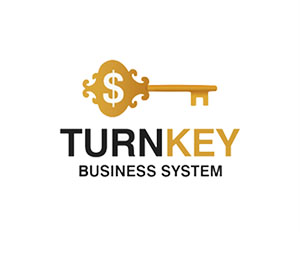Forex CRM Risk Management: Broker Protection Strategies 2025

Forex CRM Risk Management: Broker Protection Strategies 2025
Forex CRM Risk Management: Broker Protection Strategies 2025
Risk management in Forex CRM systems has evolved from basic position monitoring to sophisticated real-time threat detection that protects brokers from millions in potential losses caused by latency arbitrage, bonus abuse, and toxic order flow.Modern forex brokers operating in the United States, European Union, and Asia face an increasingly complex threat landscape where sophisticated traders exploit millisecond price discrepancies, automated systems probe for execution weaknesses, and coordinated groups systematically drain promotional budgets through bonus manipulation schemes.
The integration of advanced risk management tools into CRM platforms allows brokers to identify and neutralize these threats in real-time—with leading brokers reporting 60-85% reductions in losses from manipulative trading after implementing comprehensive risk management systems (Liquidity Finder, August 2025).
When EUR/USD experiences normal volatility like the -0.29% movement observed on October 18, 2025 (TradingView), effective risk management distinguishes between legitimate client trading and sophisticated exploitation attempts that could cost brokers hundreds of thousands of dollars in a single session.
The Economics of Broker Risk: Why Protection Matters
Forex brokers operate on razor-thin margins in an intensely competitive industry where the difference between profitability and failure often comes down to effective risk management rather than client acquisition or trading volume. A retail broker processing $500 million in daily trading volume might generate only $150,000-$200,000 in daily revenue from spreads and commissions, but a single undetected latency arbitrage trader can extract $50,000-$100,000 in a single day by exploiting price feed delays. The mathematics are brutal: one toxic trader can eliminate the profit from hundreds of legitimate clients, and a coordinated group can bankrupt a small broker in weeks.The competitive dynamics of the forex industry create additional pressure. Brokers compete aggressively on execution speed, tight spreads, and generous promotional offers—precisely the factors that create exploitation opportunities.

Forex CRM Risk Management: Broker Protection Strategies 2025
Latency Arbitrage: The Silent Profit Killer
Latency arbitrage represents the most technically sophisticated and financially damaging threat facing forex brokers, exploiting the fundamental reality that price information cannot travel instantaneously across global networks.The financial impact on brokers is severe because latency arbitrage generates consistent, predictable losses that compound rapidly.
The detection algorithms have become increasingly sophisticated, employing machine learning models trained on millions of trades to distinguish between fast legitimate scalping and latency exploitation.
The systems analyze not just individual trade characteristics but sequences and patterns: an arbitrage trader might deliberately lose occasional trades to obscure their pattern, but the overall statistical signature remains distinct.
When the system detects probable arbitrage activity, it can implement graduated responses: introducing small random delays (50-200 milliseconds) that eliminate the arbitrage opportunity without significantly impacting legitimate traders, requiring manual trade confirmation for suspected accounts, or routing suspected arbitrage trades to liquidity providers at less favorable prices that eliminate profitability.
Bonus Abuse and Promotional Exploitation
Forex brokers invest heavily in promotional offers—deposit bonuses, cashback programs, trading competitions, and referral incentives—to acquire clients in a fiercely competitive market.A typical broker might offer a 50% deposit bonus (deposit $1,000, receive $500 bonus credit) or $10 cashback per lot traded, expecting that most clients will trade actively, generate commission revenue, and potentially lose their deposits through normal trading losses. These economics work when clients behave as expected, but sophisticated bonus abusers systematically exploit promotional terms to extract value while minimizing risk and trading activity.
The basic bonus abuse strategy involves depositing funds, completing the minimum trading volume required to unlock the bonus (often 10-20 standard lots per $1,000 deposited), then withdrawing the entire balance and repeating the process with a new account or different broker. The abuser might trade the required volume using hedged positions (simultaneously buying and selling the same currency pair) or extremely low-risk strategies that generate minimal market exposure while satisfying volume requirements. If executed carefully, the abuser can extract 30-50% of the bonus value as profit while the broker gains nothing—no genuine trading activity, no commission revenue, just pure loss.
Toxic Flow Management and A-Book/B-Book Optimization
Forex brokers operate using two fundamental business models that determine how they handle client trades and where their profits originate.A-book execution routes client trades directly to liquidity providers (banks, prime brokers, ECNs), with the broker earning commission or markup on spreads while taking no market risk.
B-book execution involves the broker taking the opposite side of client trades, profiting when clients lose and losing when clients win. Most modern brokers operate hybrid models, dynamically routing each client's trades to A-book or B-book based on profitability analysis—and this routing decision represents one of the most critical risk management functions in the CRM system.
The challenge lies in accurately classifying clients as "profitable" (should be A-booked to avoid broker losses) or "unprofitable" (can be B-booked to capture their losses as broker profit). Traditional classification relied on crude metrics like account size or trading volume, but these provide minimal predictive power.
A client with a $50,000 account might be a consistently profitable trader who will drain the broker's B-book, while a client with $2,000 might be an impulsive gambler whose losses generate steady broker revenue. Misclassification is expensive: B-booking a profitable trader costs the broker real money with every winning trade, while A-booking an unprofitable trader means paying liquidity provider fees to route trades that would have generated profit if kept in-house.
The routing decisions occur in real-time, with the CRM system making A-book/B-book determinations in milliseconds as each trade is executed. For clients classified as high-risk (likely profitable), trades route immediately to liquidity providers with minimal markup. For clients classified as low-risk (likely unprofitable), trades are internalized to the B-book where the broker captures the spread and takes the opposite position. For clients in the middle—uncertain classification—the system might implement partial hedging, B-booking a percentage of their volume while A-booking the remainder to balance risk and reward.
The financial impact of optimized routing is substantial. A broker that effectively identifies and A-books toxic flow while B-booking profitable flow can improve net revenue by 40-60% compared to static routing strategies.
The key is accuracy: the machine learning models must correctly predict client profitability with sufficient precision that the benefits of selective B-booking outweigh the costs of occasional misclassification. Leading brokers report prediction accuracy of 75-85% when classifying clients as profitable or unprofitable over 90-day windows, sufficient to generate significant economic value while managing risk exposure.
Real-Time Monitoring and Automated Controls
The speed of modern forex markets demands that risk management systems operate in real-time, identifying and responding to threats in milliseconds rather than hours or days. When a client begins executing latency arbitrage trades during a volatile market session, waiting until end-of-day analysis to detect the pattern means the broker has already suffered thousands in losses.When a coordinated bonus abuse group creates multiple accounts simultaneously, detecting the pattern after bonuses are paid means the damage is done. Effective risk management requires continuous monitoring with automated responses that neutralize threats before they generate significant losses.
Modern Forex CRM platforms integrate real-time risk engines that analyze every trade, deposit, withdrawal, and account action as it occurs, comparing observed behavior against thousands of risk parameters and triggering automated responses when thresholds are exceeded.
The systems operate with latency measured in single-digit milliseconds, ensuring that protective measures activate before exploitation can scale. A trade flagged as probable latency arbitrage might be delayed by 200 milliseconds—enough to eliminate the arbitrage opportunity but imperceptible to legitimate traders.
An account exhibiting bonus abuse patterns might have withdrawal privileges temporarily suspended pending manual review. A client suddenly increasing position sizes by 10x might trigger automatic leverage restrictions to limit potential losses.
The automated control systems implement graduated responses calibrated to threat severity and confidence levels. Low-confidence flags (behavior that might indicate risk but could be legitimate) trigger enhanced monitoring and data collection without impacting the client experience.
Medium-confidence flags implement subtle protective measures like small execution delays, slightly wider spreads, or partial A-booking of trades. High-confidence flags (clear evidence of exploitation) trigger aggressive responses including account restrictions, trade rejections, or immediate account suspension. This graduated approach balances protection against the risk of false positives that would damage relationships with legitimate clients.
The monitoring systems track hundreds of risk metrics across multiple timeframes, creating a comprehensive risk profile for each client that updates continuously.
Key metrics include: trades per hour/day/week, average position holding time, win/loss ratio over rolling windows, correlation between trading activity and market volatility, execution speed patterns, position sizing relative to account balance, use of stop-losses and take-profits, trading session preferences, currency pair concentration, and dozens of other behavioral indicators. Machine learning models analyze these metrics in combination, identifying complex patterns that simple rule-based systems would miss.
The integration of risk management into the CRM platform ensures that risk data informs every aspect of client relationship management.
Customer service representatives see risk scores and flags when interacting with clients, allowing them to provide appropriate service levels and identify potential issues. Marketing teams can exclude high-risk client segments from promotional campaigns, preventing bonus abuse.
Compliance teams receive automated reports documenting risk events and system responses, supporting regulatory requirements. Finance teams get real-time visibility into risk exposure and potential losses, enabling proactive capital management.
Case Studies: Risk Management Success and Failure
A mid-sized European forex broker operating primarily in the UK and Germany experienced a crisis in Q2 2024 when they discovered that approximately 15% of their new account acquisitions over the previous six months were part of a coordinated bonus abuse network.The group had created over 200 accounts using stolen identities, virtual private networks to mask geographic locations, and prepaid debit cards for deposits. Each account deposited $1,000-$3,000, traded the minimum volume required to unlock the broker's 50% deposit bonus, then withdrew the entire balance. The total loss exceeded €450,000 before detection, and the broker faced additional regulatory scrutiny because some of the stolen identities belonged to real individuals who later complained about unauthorized accounts.
The broker's existing risk management system had failed to detect the pattern because it focused primarily on trading behavior rather than account creation forensics. The abusers traded legitimately—no arbitrage, no suspicious patterns—they simply exploited the promotional terms systematically.
After the discovery, the broker implemented a comprehensive CRM risk management overhaul that included: device fingerprinting to identify multiple accounts from the same devices, IP address analysis with VPN detection, identity verification using third-party databases, network analysis to map relationships between accounts, and behavioral analysis of trading patterns across account clusters. Within three months of implementation, the new system identified and blocked 47 additional abuse attempts, preventing an estimated €180,000 in additional losses.
A US-based forex broker serving retail traders discovered in September 2025 that a single client had extracted over $120,000 in profits over a three-month period through latency arbitrage, exploiting the broker's price feed delays during high-volatility events.
The client traded exclusively during major economic announcements—US Non-Farm Payrolls, Federal Reserve decisions, European Central Bank policy statements—executing 20-40 trades during each event with holding periods under 15 seconds and a win rate exceeding 94%. The broker's existing risk management system had flagged the account as "high-frequency trader" but hadn't implemented protective measures because the client's trading volume generated substantial commission revenue.
The financial analysis revealed that while the client generated $8,000 in commission revenue, the broker's liquidity providers charged back $128,000 in losses from the arbitrage trades, creating a net loss of $120,000. The broker implemented several risk management enhancements: real-time latency monitoring that compares the broker's prices to multiple external feeds and flags discrepancies exceeding 50 milliseconds, automatic execution delays (100-300 milliseconds) for accounts exhibiting arbitrage patterns during high-volatility periods, and dynamic spread widening during major economic announcements to eliminate arbitrage opportunities. These measures reduced latency arbitrage losses by 87% over the following quarter while having minimal impact on legitimate client trading.
An Asian forex broker operating in Singapore and Hong Kong implemented AI-powered risk management in Q1 2025, using machine learning models to optimize A-book/B-book routing decisions. Prior to implementation, the broker used simple rules-based routing: accounts under $5,000 were B-booked, accounts over $5,000 were A-booked. This crude approach meant the broker B-booked many profitable small accounts (generating losses) while A-booking many unprofitable large accounts (missing profit opportunities). The AI system analyzed 18 months of historical trading data across 12,000 accounts, identifying behavioral patterns that predicted profitability with 82% accuracy.
After implementing AI-driven routing, the broker's financial performance improved dramatically. B-book profitability increased 156% because the system accurately identified and internalized unprofitable flow while routing toxic flow to liquidity providers. The broker's overall net revenue increased 43% despite no change in client acquisition or trading volume—purely through optimized risk management. The system also identified that approximately 8% of accounts exhibited patterns suggesting they would become profitable within 90 days despite initial losses, allowing the broker to proactively move these accounts to A-book before they generated significant B-book losses.
Implementation Roadmap: Building Comprehensive Risk Management
Implementing effective risk management in Forex CRM requires a systematic approach that addresses technology infrastructure, data quality, algorithm development, staff training, and continuous optimization. Brokers attempting to implement comprehensive risk management often underestimate the complexity and timeline, treating it as a software installation rather than a business transformation that affects every aspect of operations. Successful implementations typically span 6-12 months for mid-sized brokers and require sustained executive commitment, cross-functional collaboration, and willingness to iterate based on results.The foundation is data infrastructure that captures, stores, and processes the massive volumes of information required for sophisticated risk analysis. Every trade, quote, account action, deposit, withdrawal, and system event must be logged with millisecond timestamps and sufficient detail to support forensic analysis. This data flows into a centralized data warehouse or data lake where it undergoes cleaning, normalization, and enrichment—adding external data like IP geolocation, device fingerprints, and market conditions. The data architecture must support both real-time processing (analyzing trades as they occur) and historical analysis (training machine learning models on months or years of data).
The risk engine layer implements the algorithms and models that analyze data and make risk decisions. This includes rule-based systems (if win rate > 90% AND holding time < 10 seconds, flag for arbitrage), statistical models (comparing client behavior to population distributions), and machine learning models (predicting client profitability based on behavioral patterns). The engine must operate with extremely low latency—making risk decisions in single-digit milliseconds—while maintaining high accuracy. This requires careful optimization of algorithms, efficient data structures, and often specialized hardware like in-memory databases or GPU acceleration for complex calculations.
The control layer implements automated responses to risk events, executing the graduated interventions that protect the broker while minimizing impact on legitimate clients. This includes execution delay systems, dynamic spread adjustment, automated A-book/B-book routing, leverage restrictions, withdrawal holds, and account suspensions. The control systems must integrate seamlessly with the broker's trading platform, CRM, payment processing, and other operational systems, ensuring that risk decisions propagate instantly across all relevant systems. The integration challenges are often the most time-consuming aspect of implementation, particularly for brokers using multiple legacy systems that weren't designed to work together.
The monitoring and reporting layer provides visibility into risk management operations for different stakeholders. Risk managers need real-time dashboards showing current threat levels, flagged accounts, and system performance. Compliance teams need audit reports documenting risk events and system responses. Executive teams need financial reports showing the impact of risk management on profitability. Customer service teams need account-level risk information to inform client interactions. The reporting systems must present complex risk data in intuitive formats that don't require data science expertise to interpret.
Conclusion
Risk management in Forex CRM has evolved from basic position monitoring to sophisticated, AI-powered threat detection systems that protect brokers from the increasingly complex exploitation tactics employed by latency arbitrageurs, bonus abusers, and toxic flow traders.The brokers thriving in 2025's competitive landscape—whether operating in London, New York, Singapore, or Sydney—share a common characteristic: they've invested heavily in comprehensive risk management infrastructure that identifies and neutralizes threats in real-time while maintaining excellent service for legitimate clients. The financial impact is substantial, with leading brokers reporting 60-85% reductions in losses from manipulative trading and 40-60% improvements in net revenue through optimized A-book/B-book routing.
The trajectory is clear: within 2-3 years, comprehensive AI-powered risk management will be table stakes for competitive forex brokers, not a differentiator. The regulatory environment is tightening, with authorities in the US, EU, UK, and Asia demanding more sophisticated controls around algorithmic trading, client protection, and operational resilience.
The threat landscape continues to evolve as exploitation techniques become more sophisticated and widely accessible. The brokers investing in risk management now—building robust data infrastructure, implementing machine learning models, training staff, and continuously optimizing their systems—position themselves to lead their markets while those delaying face mounting losses and competitive disadvantage.
By Miles Harrington
October 29, 2025
Join us. Our Telegram: @forexturnkey
All to the point, no ads. A channel that doesn't tire you out, but pumps you up.
October 29, 2025
Join us. Our Telegram: @forexturnkey
All to the point, no ads. A channel that doesn't tire you out, but pumps you up.









Report
My comments